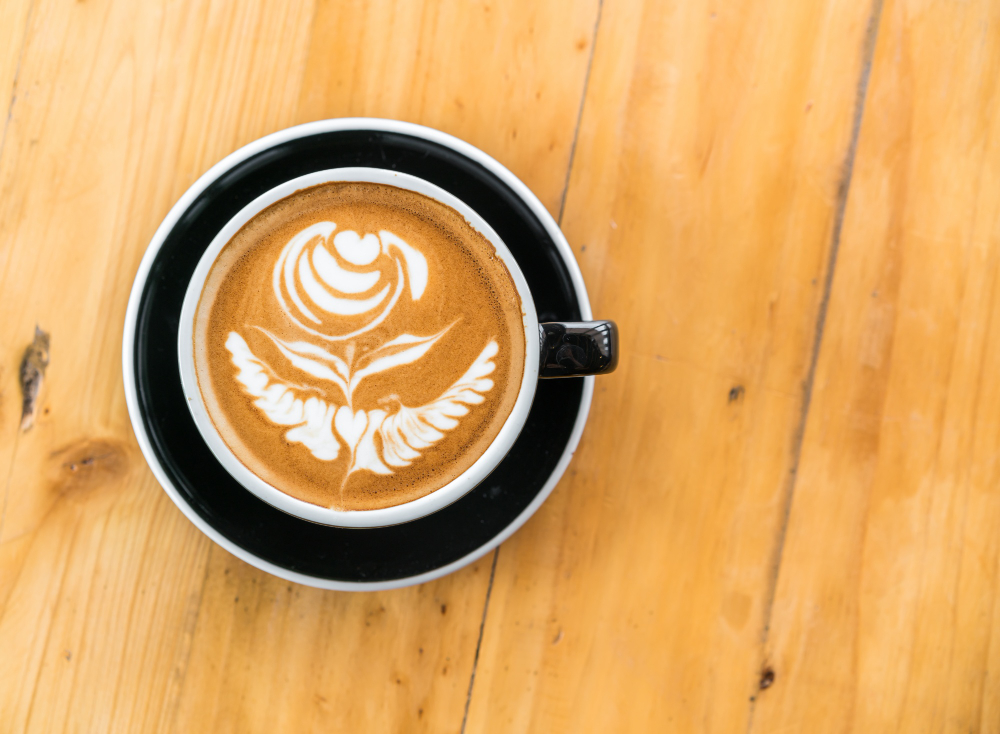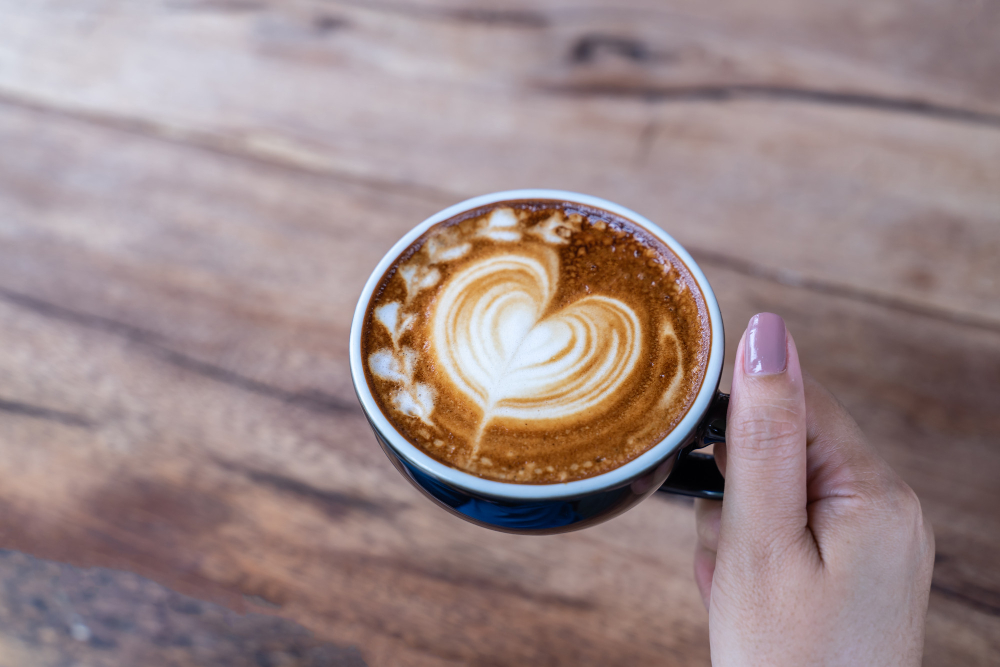Latte Art 咖啡拉花

Latte art (咖啡拉花)is a method of preparing coffee created by pouring microfoam into a shot of espresso and resulting in a pattern or design on the surface of the latte. It can also be created or embellished by simply “drawing” in the top layer of foam. In general, latte art originates from Italy.
Latte art (咖啡拉花)developed independently in different countries, following the introduction of espresso and the development of microfoam, the combination of crema (which is an emulsion of coffee oil and brewed coffee) and microfoam allowing the pattern. Latte art requires first producing espresso with crema and microfoam, and then combining these to make latte art.
The most popular style of latte art among coffee aficionados and specialty shops is free-pour latte art, which is a pattern intentionally poured into the coffee by using milk (or a milk substitute) steamed into compact bubbles. The milk is then poured into the coffee with careful movements—angle and height matter here—to create the desired pattern, such as a rosetta, tulip, or heart. There are some keys to a successful latte art(咖啡拉花):
1. Knowing the right texture and volume to develop in the milk
2. Temperature to make the art
3. The angle and closeness at which to pour,
4. Amount of milk to pour to achieve a tight surface tension
Even how to stand when one pours will affect the latte art(咖啡拉花). During our latte art class, participants will have an extensive exposure to experience every steps of creating latte art.
The presence of latte art (咖啡拉花)was once thought to help signal whether or not a coffee shop was part of coffee’s Third Wave, a movement where more conscientious attention to sourcing, roasting, storytelling, and presentation of coffee had taken hold.
We have introduced latte art (咖啡拉花)class into secondary school. This is a good chance for students to experience the work of baristas. In general, secondary school students are already mature enough to manage the basic pouring skills and create latte art.
Latte art (咖啡拉花)developed independently in different countries, following the introduction of espresso and the development of microfoam, the combination of crema (which is an emulsion of coffee oil and brewed coffee) and microfoam allowing the pattern. Latte art requires first producing espresso with crema and microfoam, and then combining these to make latte art.
The most popular style of latte art among coffee aficionados and specialty shops is free-pour latte art, which is a pattern intentionally poured into the coffee by using milk (or a milk substitute) steamed into compact bubbles. The milk is then poured into the coffee with careful movements—angle and height matter here—to create the desired pattern, such as a rosetta, tulip, or heart. There are some keys to a successful latte art(咖啡拉花):
1. Knowing the right texture and volume to develop in the milk
2. Temperature to make the art
3. The angle and closeness at which to pour,
4. Amount of milk to pour to achieve a tight surface tension
Even how to stand when one pours will affect the latte art(咖啡拉花). During our latte art class, participants will have an extensive exposure to experience every steps of creating latte art.
The presence of latte art (咖啡拉花)was once thought to help signal whether or not a coffee shop was part of coffee’s Third Wave, a movement where more conscientious attention to sourcing, roasting, storytelling, and presentation of coffee had taken hold.
We have introduced latte art (咖啡拉花)class into secondary school. This is a good chance for students to experience the work of baristas. In general, secondary school students are already mature enough to manage the basic pouring skills and create latte art.

